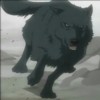Thief: Deadly Shadows (PC) review"Does a game lose worth for providing too much of a challenge? Forcing the player into a routine of patience in order to beat its difficulty is the very crux of the Thief franchise, so it seems a little unfair to berate an admittedly well-crafted videogame for this reason." |
Allow me to focus your attention on one particular segment of Thief: Deadly Shadows. It takes place towards the end of this mercilessly tough game, so only those with the patience of gods will find themselves staring up at the foreboding silhouette of Shalebridge Cradle. It is, without a doubt, one of the crowning moments of level design to this day, built on a foundation of abject terror and a perfected storytelling technique. It's difficult to explain the wonderfulness of this level without ruining its magic entirely, but as a format breaker it's fantastic for all the wrong reasons - and I mean 'wrong' in the absolute finest sense of the word. Barely anything occurs, except for the slow-burning discovery of What Happened Before. It's counter-intuitive, counter-productive and remorselessly confusing. But as the individual aspects start to come together to form a fabulously cohesive and deeply unsettling whole... well. That's Thief at its best.
It's Thief into the new generation of 'games as a narrative device', and this section comes closer than anything yet to realising the videogame's true potential: to tell stories in a way that no other medium could ever hope to achieve. The Cradle's finest aspect is its divine subtlety, its total refusal to force itself upon the player in any way other than as a character in its own right. In this derelict asylum lay a hundred dark secrets, each relegated to the darkest of corners, out of the obvious line of sight. Play through the mission with no care for this, and you'll still find yourself treated to a delectable sub-plot regarding the building's history. But delve a little deeper, and be rewarded with some of the finest storytelling in the modern videogame.
Thief at its best. The rest isn't quite so remarkable.
Thief's primary stumbling block for many will be its terribly slow pace. This is obviously an intentional focus, but it completely lacks an adequate sense of reward for the patience it demands. More than anything, it's incredibly difficult - perhaps no more so than the previous Thief offerings, but where it suffers in comparison to Looking Glass-era Thief is in creating an experience that often becomes more frustrating than tense. The improved AI - while still not functioning quite how it should - makes the familiar challenges completely overwhelming to begin with, and it takes real persistence to get to the stage where the game's sneaky style becomes gripping rather than tediously punishing. Regardless of genre, a videogame should be fun from the outset. Deadly Shadows' difficulty curve is bizarrely inverted, and the entertainment factor suffers as a result. It took me nine or ten attempts to complete the training mission, yet I wandered through the aforementioned Cradle - only a couple of hours from the end - in one go. Perplexing and disappointing.
Of course, this might be a symptom of my simply being crap at stealth games, but I'm inclined to think otherwise as I never had a problem with the series' previous incarnations. In a game very obviously designed with newcomers in mind - it's the first Thief to be developed for two machines, and it's marketed to a much wider audience than ever before - it seems cruel to be quite so punishing towards those with no previous experience of the franchise.
Even for particularly adept players, progress through this world is so sluggish that any sense of reward is replaced half with relief and half with exasperation. Certain missions can take hours to complete, and Thief has an irritating tendency to add reams of additional objectives once the central one has been reached. It feels like the game is a really bad sport. It never wants you to win.
In the new trend of non-linear gaming, Deadly Shadows makes a brave leap into the light and centres its already open-plan missions around a city hub, which the player is free to explore at will between tasks. This concept had me gleefully excited in the pre-release whispers, so I was disappointed to discover that it hasn't been implemented to any useful degree. The 'city' is painfully small, but even if you do chance upon a new area, it's still going to be yet another arduous task to explore it. Garret may be the master of deception, but the entire local population seems to instantly recognise him. Being detected by the guards lands you in jail; being detected by civilians results in everyone running to the guards who put you in jail; trying to escape from jail renders you a little helpless as you lie on the floor in a pool of your own blood, having been detected by more guards. You can see where the mob at Ion Storm was going with this: as a full-time thief, your job is perpetually risky. But once again, they've missed the mark. Once again, they forgot to make it fun.
As is the norm in the Thief games, attempting any sort of sword-based combat is hugely inadvisable, due to the fact that swords tend to cut you in half and stuff. Here, the difficulty level is increased by melee combat being absolutely rubbish. You'd think a master thief would be able to handle a simple weapon correctly, but instead he swings it with about as much power as your average four-month-old baby. Acting as a crushingly fitting metaphor for the majority of the game, hand-to-hand fighting is a sluggish and tedious process, destroying any tension with its complete ignorance of the player's actual ability. As mentioned previously, AI is improved: enemies running away to regroup, then returning en masse to track you down, is a particularly nice touch. But it still does things like - to pick one example - makes knocking a guard unconscious three metres away from another foe an entirely silent occurrence in-game.
Oh, I don't know. It's just as if Ion Storm had a thousand bright ideas, then incorporated them without a second thought about their contribution to Thief's entertainment value.
Which ties in nicely with a debate I've enjoyed having lately: to what extent should games be measured solely on 'fun-factor' versus their contribution to modern culture? A friend suggested that the true greats - the Deus Exes, the Half-Lives, the BioShocks and the Bloodlineses - have something more to say than merely "look at me, Iím adorably enjoyable," and as such fit into an entire subcategory of entertainment in their own right. In other words, they're not 'just' games. Despite the regularity of my sycophantic 'games as art' ramblings, I'm not sure I buy into this theory, particularly after my time spent with Deadly Shadows.
The breezy confidence of its narrative drive is enormously admirable, teeming as it is with memorable characters, deep histories and innovative deliveries. No one who plays more than an hour of the game will ever question that Deadly Shadows is clever. But when it's at the expense of the very point of the medium - or at least, what it's most commonly considered to be - then the game is always going to fall short. Because, ultimately, it is still a game.
At its best, it absolutely succeeds in being enthralling, moving and thrilling - but often in spite of its core mechanics. It's worth noting that the game's most memorable and exhilarating passage, Shalebridge Cradle, is one of the few segments where the difficulty drops, and the player is allowed to become immersed in the universe without the constant need to quickload back out of it.
Which brings me to this concluding pondering: does a game lose worth for providing too much of a challenge? Forcing the player into a routine of patience in order to beat its difficulty is the very crux of the Thief franchise, so it seems a little unfair to berate an admittedly well-crafted videogame for this reason. And I've gone off on one a little bit, which is terrible of me, because there are no shades at all of a bad game here. The maze-like levels are designed particularly well, crafted under a masterful marriage of technology and creativity, brought to life by beautiful architecture and disconcerting bumps in the night. And at its best, Thief manages to absorb and captivate with its constant intensity: sitting in the shadows, wielding your blackjack, preparing to pounce at the right moment; aiming a water arrow in a perfect arc over a courtyard to extinguish a light source; stealing treasures from a man's room while he sleeps inches away; running through Shalebridge Cradle, trying desperately to escape its horrors as the doors of the building bolt themselves shut...
Thief at its best - which makes the rest stand out a little too much.
 |  |  |  |  |
Freelance review by Lewis Denby (October 05, 2008)
A bio for this contributor is currently unavailable, but check back soon to see if that changes. If you are the author of this review, you can update your bio from the Settings page. |
|
More Reviews by Lewis Denby [+]
|
|
If you enjoyed this Thief: Deadly Shadows review, you're encouraged to discuss it with the author and with other members of the site's community. If you don't already have an HonestGamers account, you can sign up for one in a snap. Thank you for reading!
User Help | Contact | Ethics | Sponsor Guide | Links










